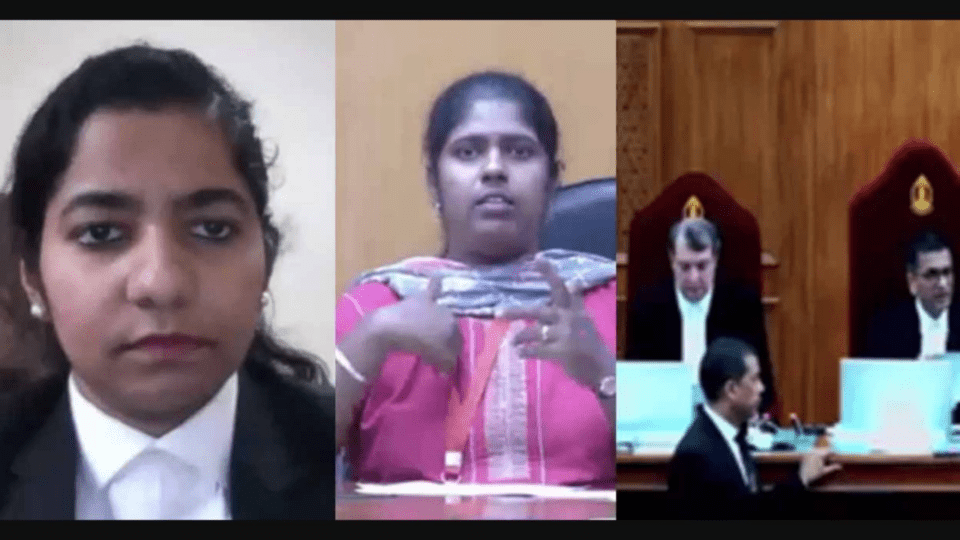The Chief Justice of India (CJI) D Y Chandrachud unveiled a significant development in the Indian legal landscape. The Supreme Court has taken a momentous step forward by appointing a sign-language interpreter, aiming to bridge the gap for hearing-impaired lawyers and litigants, ensuring their comprehensive understanding of judicial proceedings. CJI Chandrachud made this historic revelation at the very outset of the proceedings, and the legal community resonated with his decision, acknowledging the monumental nature of this move.
Also Read: “Journalism cannot be prosecuted as ‘terrorism’” say Press groups to CJI
The CJI emphasized the necessity of having a sign-language interpreter, particularly for the Constitution bench hearings, showcasing the court’s unwavering commitment to inclusivity and accessibility. This commitment was further demonstrated on a significant occasion – September 22. On this day, a bench presided over by CJI Chandrachud heard the case of Sarah Sunny, a hearing-impaired lawyer. With the invaluable assistance of sign-language interpreter Saurav Roy Chowdhury, Sarah could eloquently present her case concerning the rights of persons with disabilities (PwD).
The legal fraternity and various bar associations wholeheartedly praised the Supreme Court for allowing a hearing-impaired lawyer to advocate her case effectively through a sign-language interpreter. This progressive step was recognized as a significant stride toward a more inclusive legal system.
Underlining his sensitivity towards providing accessible justice delivery systems for the differently-abled, CJI Chandrachud took proactive measures. He established a specialized Supreme Court committee on accessibility last year, focusing on ensuring accessibility and addressing the challenges faced by specially-abled individuals within the legal framework.
Moreover, the Supreme Court implemented several infrastructural changes on its premises, dedicated to enhancing accessibility for persons with disabilities. These modifications stand testament to a concerted effort to create an environment where everyone, regardless of their abilities, can actively participate in the legal process, fostering a society that is just, equal, and truly inclusive.
As an independent media platform, we do not take advertisements from governments and corporate houses. It is you, our readers, who have supported us on our journey to do honest and unbiased journalism. Please contribute, so that we can continue to do the same in future.

